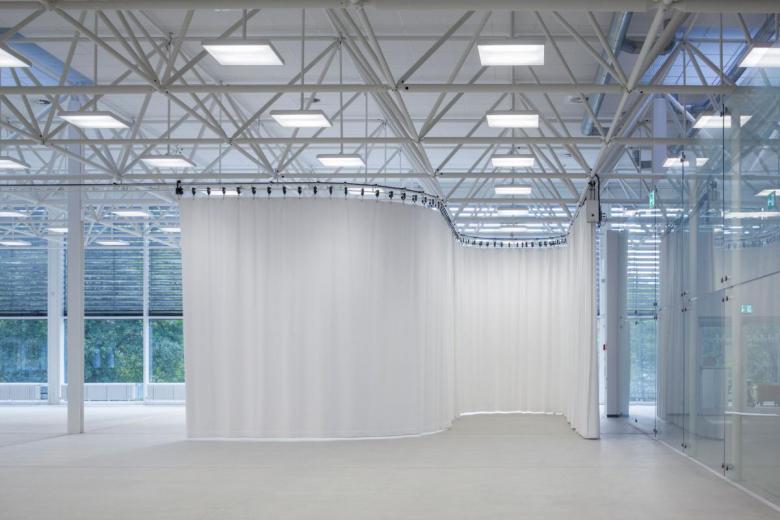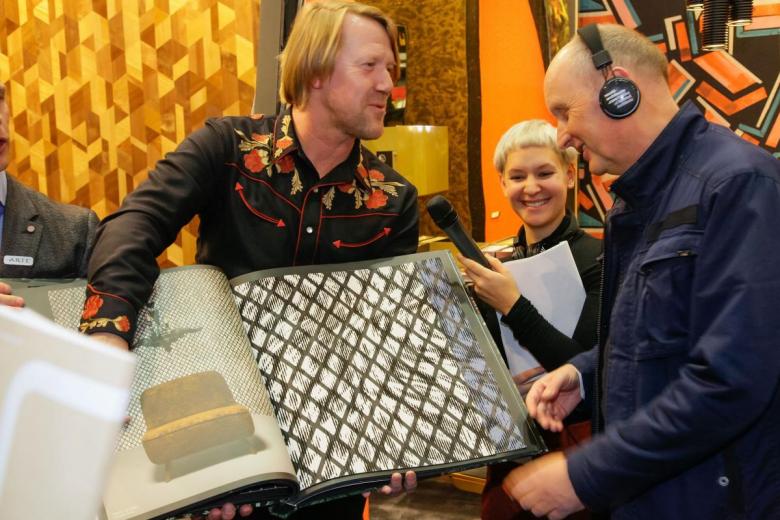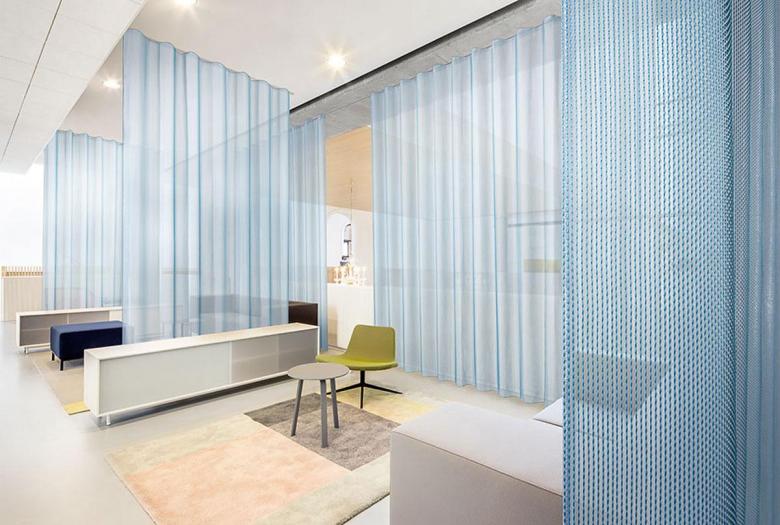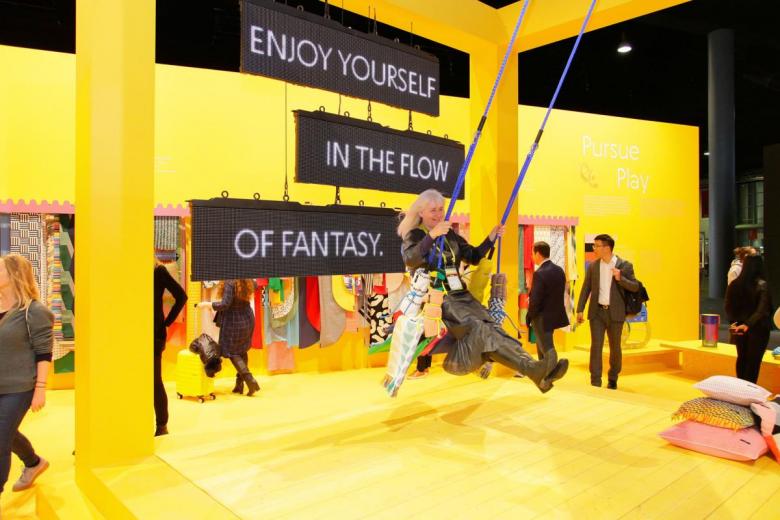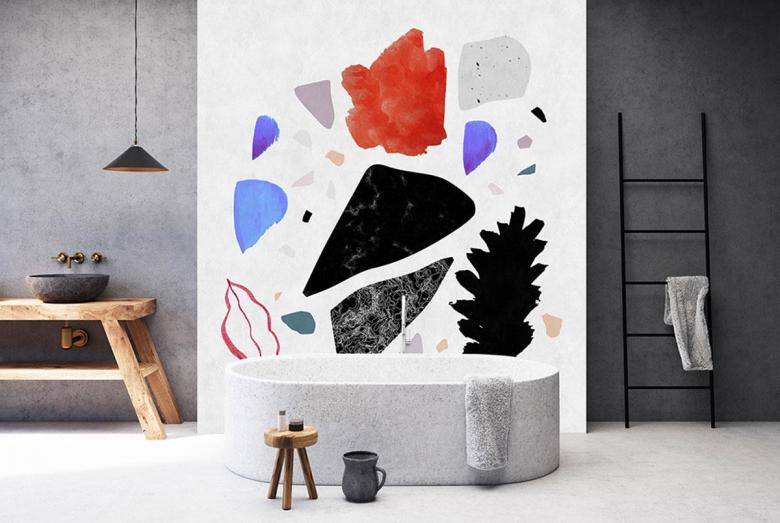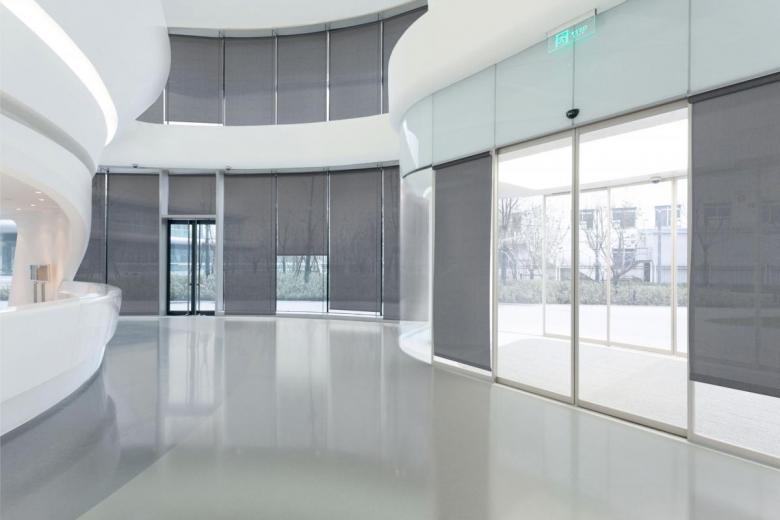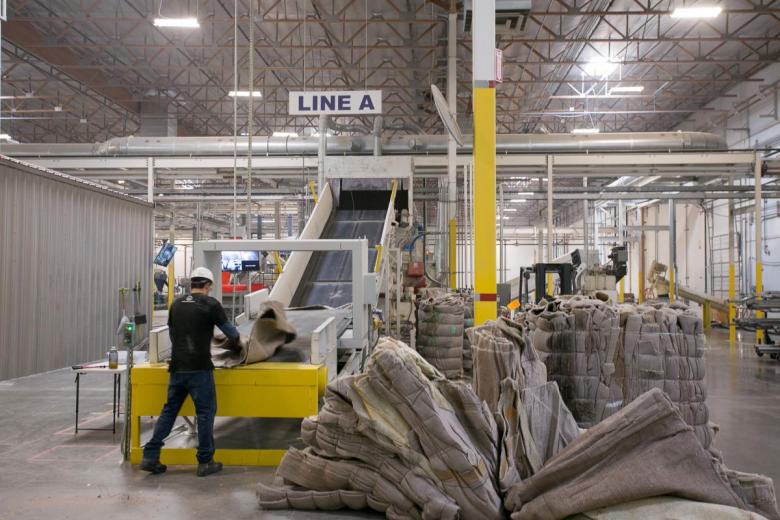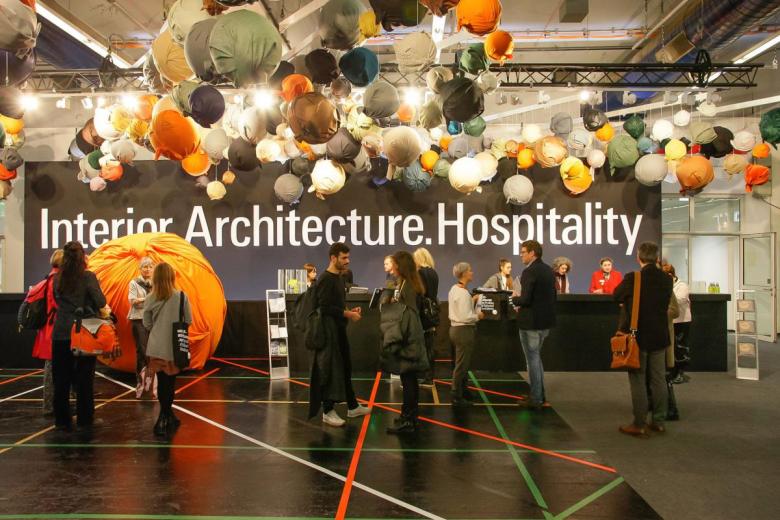At Heimtextil 2019, the focus of the extended range of contract textiles geared to architects was on acoustically effective fabrics.
The renaissance of home textiles is no longer influenced only by the lack of warmth and tactility in interiors, but increasingly by a fundamental function that carpets, upholstery, and curtains have always had: the improvement of the reverberation time of sound and thus the audibility in a room.
Thus, acoustically effective textiles and wallpapers were at the center of attention at Heimtextil from 8 to 11 January 2019, which brought together around 500 exhibitors active in the contract sector to presented their solutions all over the trade fair center in Frankfurt / Main, but mainly in Hall 4.2. The "Interior.Architecture.Hospitality" program also offered "Guided Tours" by World-Architects especially for architects and interior designers. The tours were guided by interior architects and industry experts such as Jana Vonofakos (VRAI Interior Architecture), Klaus de Winder (de Winder Architekten), and Oliver Hess (Formverbund) and provided a compact insight into the most interesting topics.
Screen or sponge
Bonding, porosity of the fibers, and weight are decisive for the sound absorption properties of fabrics. However, sound absorption and sound insulation are often confused, explains Jonas Schira, acoustician at Gerriets, one of the leading suppliers of textile acoustic solutions, a firm that equips theatres, opera houses, and offices worldwide – most recently the Elbphilharmonie in Hamburg.
The difference: with sound insulation, one tries to acoustically shield and separate rooms from each other. Sound absorption, by contrast, is about acoustics in the same room – textiles and fibers are among the most suitable materials to absorb sound. Even fabrics that are not specially acoustically optimized are per se sound-absorbing, explained Jonas Schira at Heimtextil 2019.
The most recent addition to the range from Gerriets is a curtain for offices which, with 5 to 12 layers and a special middle layer, achieves a sound reduction of up to 26 decibels and can be used to create different room scenarios in no time at all and without major construction work – just as Ludwig Mies van der Rohe and Lilly Reich did for "Café Samt & Seide" on the occasion of the "Die Mode der Dame" trade fair at the Berlin Radio Tower in 1927.
Another new product is transparent acoustic fabrics as they were presented not only by Gerriets, but also by Drapilux, Vescom, and Zimmer + Rohde. Their secret is particularly porous fibers. However, they always have a strong shine – and that's a matter of taste. After all, it is a cost-effective alternative to the many transparent, closed off glass cells that are frequently used in trendy coworking spaces.
Other products not to be neglected are felt and fleece materials, which are often used as panels or to create entire room sculptures – as presented by Cabs Design as part of the "House of Textile" of the Heimtex Association in Hall 9. For its wall and ceiling elements, Bernd Benninghoff's young company uses the Nitona fiber composite material produced by M&K Filze, which is characterized by its excellent sound absorption properties in a wide frequency range, and combines it with natural wool felt. In addition, Richard Wernekinck now includes a wool felt with a thickness of 10 millimeters especially for room acoustics in his portfolio comprising more than 80 wool felt colors under the brand name of Hollandfelt.
Close to nature
All in all, the collections suitable for commercial projects have been expanded, also because textiles made of synthetic fibers and yarns, which are optimized in terms of fire protection and meet the B 1 fire protection standard ("low flammability") in public buildings such as offices or hospitals, feel more natural today. For example, the upholstery fabrics from Fidivi, a premium manufacturer based near Turin, have an almost natural fiber-like touch. Fidivi was part of the Trevira CS special area in Hall 4.2, where the polyester fiber manufacturer exhibited its materials in cooperation with 21 partner companies such as Spandauer Velours and Getzner. A number of flooring manufacturers, including German Rugs, Findeisen, Object Carpet, Tretford, and Toucan-T, presented themselves on the adjacent joint stand "Carpet by Heimtex". In the installation, the broadloom material was suspended from the ceiling and demonstrated just how much carpets can contribute to good room acoustics.
After a climate protection charter was signed by 40 leading clothing companies such as Adidas, Puma, and Esprit at the World Climate Conference in Katowice last December, sustainable solutions were again the focus at Heimtextil. It seems that the textile industry, with its use of chemicals and not least the production of short-lived fast fashion, wants to make a contribution to a more sustainable and responsible world. Numerous exhibitors are turning to the recycling of PET bottles and ocean plastic as well as the use of certified natural materials. An example was included in the World-Architects tour: Econyl from the Italian manufacturer Aquafil is one of the best-known polyamide 6 yarns, which is made from 100 percent recycled materials such as fishing nets, top layers of carpets, or production waste and is used, for example, at Object Carpet.
Fine climate
The performance of fabrics is also being constantly enhanced for outdoor applications – not least in response to ever more extreme climatic conditions. A specialist for outdoor fabrics is French manufacturer Serge Ferrari, who takes its expertise from the yachting sector. Meanwhile, Serge Ferrari is active in the architecture and interior design sector worldwide, supplying upholstery fabrics, sun protection textiles, outdoor textiles, and façade fabrics. Solar protection textiles, in particular, are gaining in importance – this is what Serge Ferrari caters for with its Soltis range, which includes the new "Soltis Touch" for internal heat and solar protection featured at Heimtextil.

